#Antonio Fontana
Text
Lecturas de agosto. Cuarta semana
Mujer equivocada / Mercedes Rosende. Editorial Alrevés, 2023
Úrsula está insatisfecha. Demasiado fea, demasiado hambrienta, demasiado sola…, su vida no transcurre en absoluto como le gustaría. Su hermana es más guapa, su vecina más feliz, y ¿quién puede mantener eternamente una dieta de sopa de verduras? La misteriosa llamada de chantaje que recibe, informándola de que su marido ha sido…

View On WordPress
#Ambición#Antonio Fontana#Úrsula#chantaje#Democracia#homosexualidad#instituto#la futura directora#machismo#madre#Marie Vingtras#Mercedes Rosende#muerte#niño#nieve#obesidad#Santi Alarcón#Tom Perrotta#Tracy Flick
1 note
·
View note
Text

Antonio Crivelli, Carlo Fontana, Borromeo Gardens, Isola Bella, Lake Maggiore, Italy, 1634–1714
#art#design#architecture#black and white#Antonio Crivelli#Carlo Fontana#Borromeo Gardens#Isola Bella#Italy#Lake Maggiore
100 notes
·
View notes
Text
15 aprile … ricordiamo …
15 aprile … ricordiamo …
#semprevivineiricordi #nomidaricordare #personaggiimportanti #perfettamentechic
2023: Mario Fratti, drammaturgo italiano. La sua produzione conta oltre 100 opere, tradotte in 20 lingue e rappresentate in 600 teatri di tutto il mondo. Dopo la laurea in Lingue e Letterature Straniere conseguita all’Università Ca’ Foscari a Venezia, Fratti avviò alla fine degli anni cinquanta una ricca produzione drammatica. È del 1959 il suo primo dramma Il nastro, vincitore del premio RAI.…

View On WordPress
#15 aprile#Antonio De Curtis#Antonio Griffo Focas Flavio Angelo Ducas Comneno Porfirogenito Gagliardi De Curtis di Bisanzio#Brian Dennehy#Brian Manion Dennehy#Bruce Myers#Divina#Elizabeth Ann Sheridan#Estelle Taylor#Giovanna Fontana#Greta Garbo#Greta Lovisa Gustafsson#Harald Haubenstock#Harry Meyen#Ida Estelle Taylor#il principe della risata#Liz Sheridan#María Ester Beomonte#Maria Denis#Mario Fratti#Nicholas Peter Conte#Raimondo Vianello#Riccardo Billi#Richard Conte#Ricordiamo#stile alla Garbo#Tim McIntire#Timothy John McIntire#Totò#Wallace Beery
0 notes
Text
settembre: patafisica & asemic writing a milano
“PataAsemica” a cura di CalDu FreSche, Marco Garophalo e Giuseppe Calandriello presso Stecca3, Milano.
Artisti in mostra nella sezione Asemica: Vincenzo Accame, Vincenzo Agnetti, Francesco Aprile, Francesca Biasetton, Cristiano Caggiula, Giuseppe Calandriello, Luciano Caruso, Laura Cingolani, Antonio Devicienti, Federico Federici, Giovanni Fontana, Marco Giovenale, Mariangela Guatteri, Bruno…

View On WordPress
#Antonio Devicienti#Antonio Francesco Perozzi#Bruno Munari#Cristiano Caggiula#Enzo Patti#Federico Federici#Francesca Biasetton#Francesco Aprile#Giancarlo Pavanello#Giovanni Fontana#Giuseppe Calandriello#Laura Cingolani#Luciano Caruso#Marco Garophalo and Giuseppe Calandriello at Stecca3#Marco Garophalo e Giuseppe Calandriello presso Stecca3#Marco Giovenale#Mariangela Guatteri#Martina Stella and William Xerra. On the occasion of "Alingue e Apostrofi". Festival of additional universes and new (A)languages.#Martina Stella e William Xerra. In occasione di "Alingue e Apostrofi". Festival degli universi supplementari e dei nuovi (A)lingua#Milan. Artists on show in the Asemica section: Vincenzo Accame#Milano. Artisti in mostra nella sezione Asemica: Vincenzo Accame#PataAsemica" a cura di CalDu FreSche#Tommasina Bianca Squadrito#Vincenzo Agnetti
0 notes
Text
Chiesa di San Carlo Borromeo - A small religious treasure in the heart of Lugano
The structure was built between 1640 and 1642 on a project by Giovanni Angelo Galassini and Antonio Castelli, on commission of the confraternity named after San Carlo Borromeo. It was restored, but deprived of the right side, in 1950. The façade, made by the Curieglian Domenico Fontana, dates back to 1829.
The façade, made by the Curieglian Domenico Fontana, was restored in 2001 / Image:…

View On WordPress
#Antonio Castelli#Chiesa di San Carlo Borromeo#Church#Curieglian Domenico Fontana#Giovanni Angelo Galassini#San Carlo Borromeo
0 notes
Text
Exploring Rome on the Hop On/Hop Off Bus
Exploring Rome on the Hop On/Hop Off Bus
What is more fun than boarding an overnight flight to Rome, only to find yourself waking up in La Citta Eterna? With a full day ahead and an unending list of sites to explore, I couldn’t wait to board the train for Roma St. Pietro. The Gemelli station was only a short walk from my hotel and within minutes, I had soon arrived.
I followed the directional signs pointing me towards St. Peter’s…
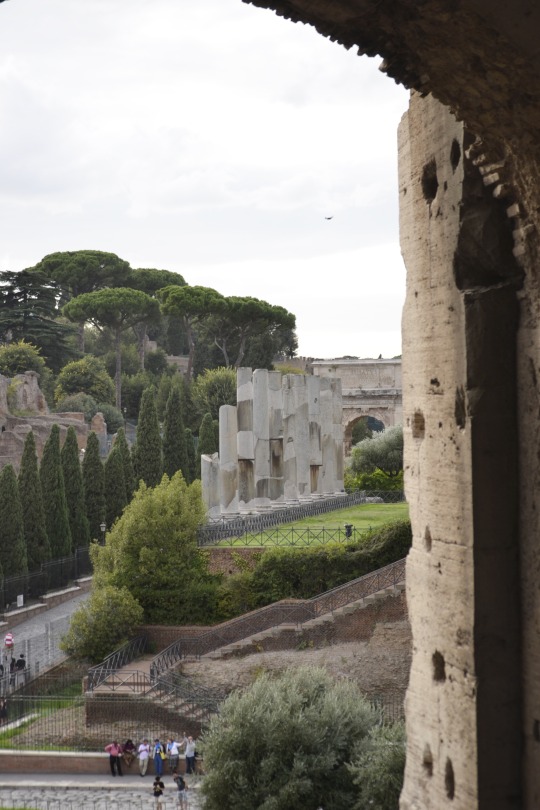
View On WordPress
#aedes fontunaie huiusce diel#Antonio Raggi#Area Sacra di Largo Argentina#Athena Nike#Bernini#Carlo Maderno#Castel Sant&039;Angelo#castle#circus maximus#Colosseum#Curia of Pompey#Dacia#Dome of San Guiovanni dei Florintini#Dominichino#Domitian#Domus Augustana#Flavian Amphitheatre#Fontana della Naiadi#fountains#Gemelli#Giovanni Lanfranco#Hadrian#HoHo bus#hop on hop off bus#Ides of March#Italy#Julius Caesar#Largo Argentina#Mario Minghetti#Mario Rutelli
1 note
·
View note
Text
TOP 100 US RIOTED CITIES!
I'm sure if anything goes down from all the people who have crossed over our borders, the Military will have everything under control swiftly. You may want to avoid these cities if anything goes down, and for your safety, please stay away from the military if you see them. This list was pulled and organized from a NY Times recent article listing the top 100 prior-rioted cities, for quick reference. They are 👇
(THOSE WITH * ARE TOP 25 CITIES JUST ISSUED BY THE WHITE HOUSE ON 2/9/24):
Alabama
Huntsville
Mobile
Alaska
Arizona
* Phoenix
Arkansas
Bentonville
Conway
Little Rock
California
Beverly Hills
Fontana
La Mesa
* Los Angeles
* Oakland
Sacramento
* San Diego
* San Francisco
San Jose
San Luis Obispo
Santa Ana
Santa Rosa
Vallejo
Walnut Creek
Colorado
Colorado Springs
* Denver
Connecticut
Delaware
Florida
Fort Lauderdale
Jacksonville
Lakeland
* Miami
Orlando
West Palm Beach
Georgia
* Atlanta
Athens
Hawaii
Idaho
Illinois
Aurora
Bloomington
Rockford
Indiana
Fort Wayne
Hammond
Indianapolis
Lafayette
Iowa
Des Moines
Iowa City
Waterloo
Kansas
Wichita
Kentucky
Louisville
Louisiana
* New Orleans
Maine
Maryland
Massachusetts
* Boston
Michigan
* Detroit
Grand Rapids
Kalamazoo
Lansing
Minnesota
Duluth
Minneapolis
* St. Paul
Mississippi
Missouri
Ferguson
Kansas City
St. Louis
Montana
Nebraska
Lincoln
Omaha
Nevada
Las Vegas
Reno
New Hampshire
New Jersey
New Mexico
Albuquerque
New York
Albany
* Buffalo
* New York City
North Carolina
Ashville
Charlotte
Raleigh
Wilmington
North Dakota
Fargo
Ohio
Cincinnati
Cleveland
Columbus
Dayton
Springfield
Toledo
Oklahoma
Oklahoma City
Tulsa
Oregon
Eugene
Portland
Salem
Pennsylvania
Erie
* Philadelphia
Pittsburgh
Rhode Island
Providence
South Carolina
Charleston
Columbia
South Dakota
Sioux Falls
Tennessee
Chattanooga
Murfreesboro
Nashville
Texas
* Arlington
Austin
* Dallas
* El Paso
Fort Worth
* Houston
Lewisville
* San Antonio
Utah
* Salt Lake City
Vermont
Virginia
Fredericksburg
Richmond
Virginia Beach
Washington
Bellevue
* Seattle
Spokane
West Virginia
Wisconsin
Green Bay
Madison
Milwaukee
Wyoming
#pay attention#educate yourselves#educate yourself#knowledge is power#reeducate yourself#reeducate yourselves#think about it#think for yourselves#think for yourself#do your homework#do some research#do your own research#ask yourself questions#question everything#news
42 notes
·
View notes
Text
Bexar County Coliseum, San Antonio, Texas (Oct. 14, 1956)
Elvis and the Blue Moon Boys - Scotty Moore, Bill Black and DJ Fontana - performed at the Coliseum at 3PM and 8PM.
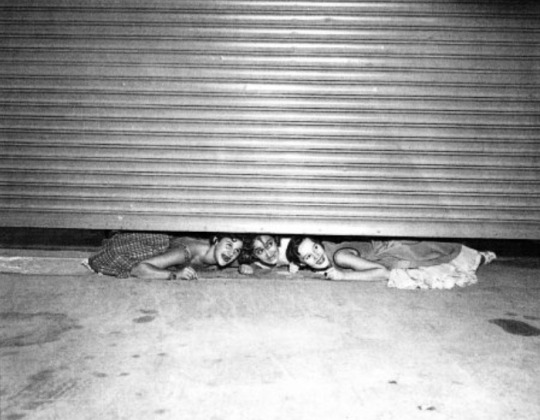
October 14, 1956: Elvis fans peeking under metal door at Bexar County Coliseum. Photo by Gilbert Barrera © Institute of Texan Cultures, San Antonio Light Collection. Courtesy Andy Crews -- Source/Credits scottymoore.net

DJ, Bill, Elvis and Scotty onstage at the Bexar County Coliseum, San Antonio, Texas - Oct 14, 1956 Photo by Sherry Davis courtesy Steve Bonner -- Source/Credits scottymoore.net

Fans watching Elvis performing at the Bexar County Coliseum, San Antonio, Texas, on Oct 14, 1956. News Staff Photo courtesy Andy Crews and the San Antonio Public Library. Source/Credits scottymoore.net
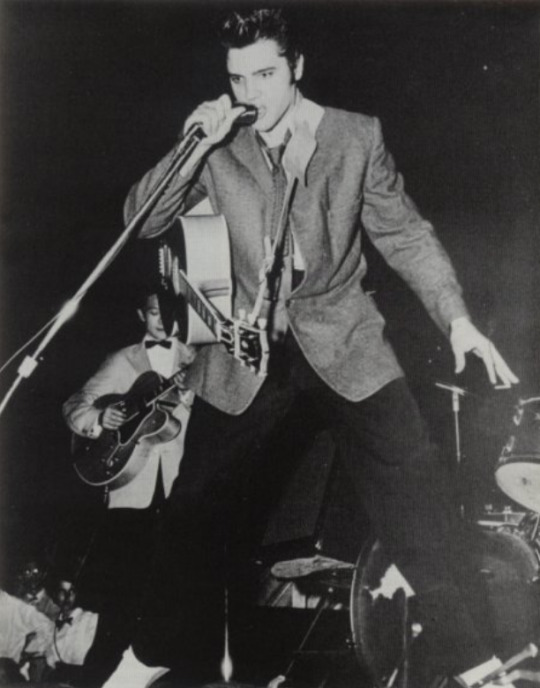
Scotty and Elvis onstage at the Bexar County Coliseum, San Antonio, Texas, on Oct 14, 1956. Photo courtesy Elvis Album -- Source/Credits scottymoore.net
READ MORE ABOUT THOSE CONCERTS ON SCOTTYMOORE.NET: Bexar County Coliseum - San Antonio, TX ♥
#elvis concerts#elvis fans and how i see myself in them#oh... the memories I wish I had#and the “elvis fan fashion”... 🤭#I need me one of those skirts#idk why but there's some cities and states Elvis performed that caught my attention the most... Texas being one of them.#elvis#elvis presley#1956#50s elvis#scotty moore#bill black#DJ fontana#texas
15 notes
·
View notes
Text

Ieri notte mentre dormivo
sognai, felice illusione!,
che una fontana fluiva
dentro il mio cuore.
Dimmi, per che gora nascosta,
acqua giungi fino a me,
sorgiva di nuova vita
dove non bevvi mai?
Ieri notte mentre dormivo
sognai, felice illusione?,
che un alveare avevo
dentro il mio cuore;
e le api dorate
fabbricavano in esso,
con le vecchie amarezze,
bianca cera e dolce miele.
Ieri notte mentre dormivo
sognai, felice illusione!,
che un sole ardente splendeva
dentro il mio cuore.
Ardente perché dava calore
di rosso focolare,
e sole perché rischiarava
e perché faceva lacrimare.
Ieri notte mentre dormivo
sognai, felice illusione!,
che era Dio quel che avevo
dentro il mio cuore.
Antonio Machado
**********************
Last night while I was sleeping
I dreamed, happy illusion!,
that a fountain flowed
inside my heart.
Tell me, for what hidden gorge,
water come up to me,
spring of new life
where did you never drink?
Last night while I was sleeping
I dreamed, happy illusion?
what a hive I had
inside my heart;
and golden bees
they built in it,
with the old bitterness,
white wax and sweet honey.
Last night while I was sleeping
I dreamed, happy illusion!,
that a burning sun shone
inside my heart.
Burning because it gave heat
hearth red,
and sun because it brightened
and because it made you cry.
Last night while I was sleeping
I dreamed, happy illusion!,
that it was God I had
inside my heart.
Antonio Machado
20 notes
·
View notes
Text
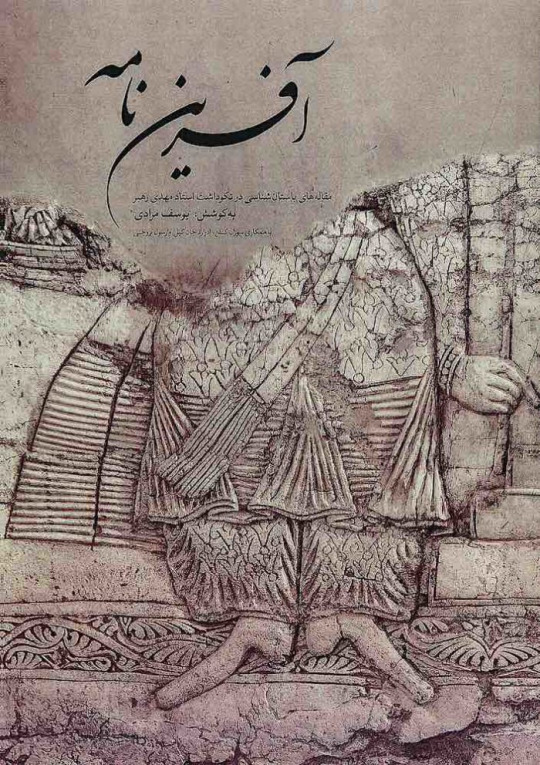

Afarin Nameh: Essays on the archaeology of Iran in Honour of Mehdi Rahbar; Āfrīnʹnāmah
آفریننامه: مقالههای باستانشناسی در نکوداشت استاد مهدی رهبر
Editors: Yousef Moradi, with the assistance of Susan Cantan, Edward J. Keall and Rasoul Boroujeni
Publisher: The Research Institute of Cultural Heritage and Tourism (RICHT), Tehran, 2019
Table of contents of English section
Antigoni Zournatzi: “Travels in the East with Herodotus and the Persians: Herodotus (4.36.2-45) on the Geography of Asia”
Vesta Sarkhosh Curtis: “From Mithradat I (c. 171-138 BCE) to Mithradat II (c. 122/1-91 BCE): the Formation of Arsacid Parthian Iconography”
D.T. Potts and R.P. Adams: “The Elymaean bratus: A Contribution to the Phytohistory of Arsacid Iran”
Vito Messina and Jafar Mehr Kian: “Anthrosol Detection in the Plain of Izeh”
Rémy Boucharlat: “Some Remarks on the Monumental Parthian Tombs of Gelālak and Susa”
Edward J. Keall: “Power Fluctuations in Parthian Government: Some Case Examples”
Bruno Genito: “Hellenistic Impact on the Iranian and Central Asian Cultures: The Historical Contribution and the Archaeological Evidence.”
Pierfrancesco Callieri: “A Fountain of Sasanian Age from Ardashir Khwarrah”
Behzad Mofidi-Nasrabadi: “The Gravity of New City Formations: Change in Settlement Patterns Caused by the Foundation of Gondishapur and Eyvan-e Karkheh”
St John Simpson: “The Land behind Rishahr: Sasanian Funerary Practices on the Bushehr Peninsula”
Barbara Kaim: “Playing in the Temple: A Board Game Found at Mele Hairam, Turkmenistan”
Eberhard W. Sauer, Hamid Omrani Rekavandi, Jebrael Nokandeh and Davit Naskidashvili: “The Great Walls of the Gorgan Plain Explored via Drone Photography”
Jens Kröger: “The Berlin Bottle with Water Birds and Palmette Trees”
Carlo G. Cereti: “Once more on the Bandiān Inscriptions”
Gabriele Puschnigg: “East and West: Some Remarks on Intersections in the Ceramic Repertoires of Central Asia and Western Iran”
Matteo Compareti: ““Persian Textiles” in the Biography of He Chou: Iranian Exotica in Sui-Tang China”
Ritvik Balvally, Virag Sontakke, Shantanu Vaidya and Shrikant Ganvir: “Sasanian Contacts with the Vakatakas’ Realm with Special Reference to Nagardhan”
Antonio Panaino: “The Ritual Drama of the High Priest Kirdēr”
Touraj Daryaee: “Khusrow Parwēz and Alexander the Great: An Episode of imitatio Alexandri by a Sasanian King”
Maria Vittoria Fontana: “Do You Not Consider How Allāh … Made the Sun a Burning Lamp?”
Jonathan Kemp and John Hughes: “Analysis of Two Mortar Samples from the Ruined Site of a Sasanian Palace and Il-Khānid Caravanserai, Bisotun, Iran”
I found on the net the following abstract of the contribution of Antigoni Zournatzi to this volume, having as subject the Persian sources of Herodotus concerning the geography of Asia, although unfortunately for the moment I don't have access to the paper itself and more generally to this very interesting volume:
This paper considers a description of Asia in the work of Herodotus—a description that quite evidently further had implications for the manner in which this Greek historian perceived the shape and order of magnitude of the territories of Europe and Asia, as well as the overall form of the ‘inhabited’ world (oikoumenē). It supports the idea of a close affinity of Herodotus’ views in this instance with ancient Persian ways of looking at the world. Indications that Herodotus’ picture of Asia—and hence, his views about the form of the ‘inhabited’ world that are based upon this picture—must emanate from official Persian definitions of their realm derive, on the one hand, from the general coincidence of Herodotus’ Asia with Persian territorial realities, and on the other hand, from significant convergences that can be traced between Herodotus’ representation of the Asiatic continent and the Persians’ own perceptions and representations of their imperial domain.
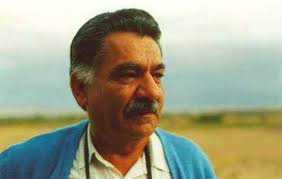
Mehdi Rahbar is leading Iranian archaeologist.
3 notes
·
View notes
Text
15 aprile … ricordiamo …
15 aprile … ricordiamo …
#semprevivineiricordi #nomidaricordare #personaggiimportanti #perfettamentechic
2022: Liz Sheridan, Elizabeth Ann Sheridan, attrice statunitense. Sebbene sia meglio conosciuta per i suoi ruoli come la madre di Jerry, Helen, in Seinfeld e la vicina ficcanaso, la signora Ochmonek, nella sitcom ALF, la sua carriera decennale è stata ampia e includeva lavori sul palcoscenico e su schermi grandi e piccoli. Sheridan ha iniziato la sua vita professionale come ballerina e cantante…

View On WordPress
#15 aprile#Antonio De Curtis#Antonio Griffo Focas Flavio Angelo Ducas Comneno Porfirogenito Gagliardi De Curtis di Bisanzio#Brian Dennehy#Brian Manion Dennehy#Bruce Myers#Divina#Elizabeth Ann Sheridan#Estelle Taylor#Giovanna Fontana#Greta Garbo#Greta Lovisa Gustafsson#Harald Haubenstock#Harry Meyen#Ida Estelle Taylor#il principe della risata#Liz Sheridan#María Ester Beomonte#Maria Denis#Nicholas Peter Conte#Raimondo Vianello#Riccardo Billi#Richard Conte#Ricordiamo#stile alla Garbo#Tim McIntire#Timothy John McIntire#Totò#Wallace Beery#Wallace Fitzgerald Beery
0 notes
Text


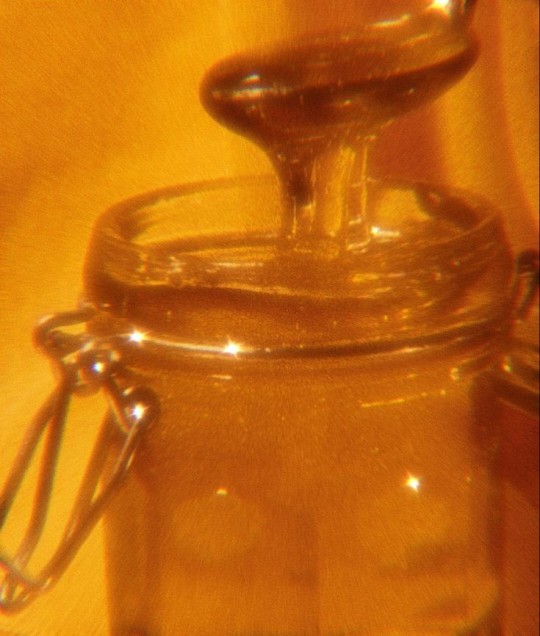
Anoche cuando dormía
soñé ¡bendita ilusión!
que una fontana fluía
dentro de mi corazón.
Dí: ¿por qué acequia escondida,
agua, vienes hasta mí,
manantial de nueva vida
en donde nunca bebí?
Anoche cuando dormía
soñé ¡bendita ilusión!
que una colmena tenía
dentro de mi corazón;
y las doradas abejas
iban fabricando en él,
con las amarguras viejas,
blanca cera y dulce miel.
Anoche cuando dormía
soñé ¡bendita ilusión!
que un ardiente sol lucía
dentro de mi corazón.
Era ardiente porque daba
calores de rojo hogar,
y era sol porque alumbraba
y porque hacía llorar.
Anoche cuando dormía
soñé ¡bendita ilusión!
que era Dios lo que tenía
dentro de mi corazón.
"Anoche cuando dormía", Antonio Machado.
#libros#poemas#literatura#aesthetic#lectures#poetry#literature#quotes#cozy aesthetic#cozycore#poesia poema
2 notes
·
View notes
Text
The History of the Cubic Equation, the Original Celebrity Feud
[also posted here]
[paper that I wrote for a class in undergrad that mostly served as an exercise in using LaTex]
Abstract
This document will describe the history and methods behind how the cubic equation was solved, specifically focusing on the work of specific sixteenth century Italian mathematicians. It will also touch upon the quartic and quintic equations.
1 The Life and Times of Tartaglia
Niccolo Fontana, known as “Tartaglia,” meaning “the stammerer,” was a Venetian mathematician during the early sixteenth century. His many accomplishments included engineering, working as a bookkeeper, and creating the first Italian translations of the works of Archimedes and Euclid, but he is most famous for his involvement in the 1535 Bologna University Mathematics Competition. Some years before, University of Bologna's Chair of Arithmetic and Geometry, Sciopione dal Ferro, solved one case of the cubic equation, a polynomial equation in which the highest variable exponent is three, a case only involving positive numbers. Though it is believed that dal Ferro solved this form around 1515, he kept it a secret until just before his death in 1526, at which point he shared this solution with his student and far inferior mathematician, Antonio Fior. Rumors began to spread that the cubic had been solved, eventually reaching Tartaglia. Tartaglia managed to find his own partial solution to the cubic in this time, leading the overconfident Fior to challenge him to a public math competition. According to the rules, each gave the other thirty problems to solve over the course of forty to fifty days. All of Fior's problems were set to the form x^3 + mx = n which dal Ferro had found, believing that Tartaglia would not be able to figure it out. However, Tartaglia had not only managed to solve all of the problems Fior had presented him with within the course of two hours, but he found a general method for solving all forms of the cubics before the contest was over. This ensured Tartaglia's victory [1].

Figure 1: A graph resulting from a cubic function
2 Enter Cardano
News of Tartaglia's win spread across Italy, eventually reaching Milan-based mathematician and general eccentric character Gerolamo Cardano. Though brilliant in mathematics and medicine, Cardano's illegitimate birth and generally abrasive personality had limited his opportunities, leading to a somewhat inconsistent professional life. Cardano managed to bring himself to prominence in the world of math with the publication of The Practice of Arithmetic and Simple Mensuration, the first of one hundred and thirty-one books he would write in his lifetime [2]. Cardano approached Tartaglia in 1539 with hopes of adding his solutions to the cubic to his next book, Practica Arithmeticae. Tartaglia was reluctant to share his method, having previously coded his method in a cryptic poem so that no one would figure it out, but did so after Cardano made an oath to not publish his ideas. Using this knowledge, Cardano spent the next six years working on the cubic and quartic equations, sometimes with the help of his assistant Lodovico Ferrari [1].
Ferrari was born in Bologna, Italy in 1522, a particularly politically tumultuous time for Northern Italy. Ferrari's father was killed in the army, meaning he had to move in with his uncle, Vincent. It so happened that Vincent's son Luke had run away to Milan for work and ended up briefly as a servant to Cardano. Luke ended up tiring of the work and going back home without telling Cardano. Cardano contacted Vincent to send his servant back, but Vincent thought that his fourteen-year-old nephew might make a better candidate. Upon Ferrari's arrival to Cardano's in November of 1936, Cardano learned that the teenager was literate and made him a secretary rather than a servant. He began to teach him mathematics, at which Ferrari proved to be so talented that he was able to teach by the age of eighteen and, by the age of twenty, he began working as a public lecturer in geometry. During this time, he and Cardano also worked on Tartaglia's cubic solutions in an attempt to solve the quartic as well. Between Tartaglia's findings and the work of another mathematician, Zuanne da Coi, Ferrari eventually found a solution for the quartic equation, polynomials for which the highest variable exponent is four. He wanted his work published, but it would be impossible to do so without revealing the work Tartaglia had produced, which Cardano had previously vowed to keep a secret. The two did further research and decided that because technically dal Ferro had solved a form of the cubic before Tartaglia, they could publish the findings about the cubic and the quartic without it being considered breaking Cardano’s oath. He featured these works in his book Ars Magna in 1545 [3].

Figure 2: A graph resulting from a quartic function
3 Ferrari Reigns Victorious
Needless to say, Tartaglia did not take well to the news of his findings being published, especially by someone who had previously promised not to. The alleged loophole counted for naught, as the portion about the cubic was very much Tartaglia's work. Ferrari responded to Tartaglia's anger by writing him an insulting letter in which he also challenged him to a public debate. Tartaglia saw no point in debating the relatively-unknown Ferrari, but did respond in an attempt to bring Cardano in. Tartaglia and Ferrari exchanged publicly read insulting letters for about a year. The rivalry was brought to its conclusion in 1548. Tartaglia was offered a job as a lecturer in Brescia and needed to participate in a public math competition with Ferrari to prove that he was worthy of the spot. Though less experienced in the ways of public debate than Tartaglia, Ferrari proved himself far more understanding of the concepts at hand, not only his own quartic equation, but the cubic as well. Tartaglia left that night in shame, leaving Ferrari as the winner [4].
4 The Failed Quintic
Though all proven mathematically brilliant, neither Ferrari, Cardano, nor Tartaglia ever even attempted to breach the quintic equation. It is thought that the first mathematician to attempt to actually solve for a specific quintic equation was French mathematician Joseph-Louis Lagrange in the eighteenth century. He tirelessly studied the previously developed methods for the quadratic, cubic, and quartic equations for clues. He focused on how rational numbers changed under permutations, but could not find an expression for powers above four. His successor came in the form of Italian mathematician Paolo Ruffini. Ruffini's work focused on the properties of permutations with the goal of proving that the quintic was not solvable. Though Ruffini did develop proofs, his work was considered vague for its focus on patterns instead of computation and was not well-accepted by mathematicians at the time. In the nineteenth century, Norwegian mathematician Niels Henrik Abel carried on with Ruffini’s work, publishing the completed versions of the proofs, and confirming that quintic functions cannot be solved with a single equation. This work is known to this day as Abel's Impossibility Theorem,or the Abel-Ruffini Theorem [5].
References
[1] Mastin, Luke. 16th Century Mathematicians. The Story of Mathematics, 2010.
http : //www.storyof mathematics.com/16thtartaglia.html
[2] JJ O’Connor and EF Robertson. Quadratic, Cubic, and Quartic Equations University of St. Andrews, February 1996.
http : //www−groups.dcs.st−and.ac.uk/history/HistT opics/Quadraticetcequations.html
[3] JJ OConnor and EF Robertson. Giralamo Cardano. School of Mathematics and Statistics at the University of Saint Andrews, June 1998
http : //www−history.mcs.st−andrews.ac.uk/Biographies/Cardan.html
[4] JJ OConnor and EF Robertson. Lodovico Ferrari. School of Mathematics and Statistics at the University of Saint Andrews, September 2005.
http : //www−groups.dcs.st−and.ac.uk/history/Biographies/F errari.html
[5] Fiona Brunk. Galois' Predecessors. School of Mathematics and Statistics at the University of Saint Andrews, January 2005.
http : //www−history.mcs.st−and.ac.uk/P rojects/Brunk/Chapters/Ch1.html
#mathematics#cubic equation#quartic equation#quintic equation#history#Tartaglia#celebrity feuds#celebrity beef#don't feed the trolls
2 notes
·
View notes
Text
“ Lo scrittore e saggista austriaco Stefan Zweig, in un articolo del ’31, annotava che ogni essere umano «grazie al libro, non è piú murato solo con se stesso nel proprio ristretto campo visivo: può invece rendersi partecipe di tutti gli avvenimenti presenti e passati, dell’intero pensare e sentire dell’intera umanità». Attraverso i libri – continuava Zweig – «un mondo piú tumultuoso e selvaggio irrompeva all’interno delle mura dell’abitazione borghese»; grazie ai libri «ho intuito per la prima volta l’incommensurabile vastità del mondo e il piacere di smarrirmi in essa»; leggendo non si vede la realtà soltanto con i propri occhi, «ma con lo sguardo di innumerevoli anime». Chi legge segue il desiderio di vivere una vita “allontanante”, di lasciarsi magari alle spalle un mondo tetro e spiacevole, ed evadere in uno piú vasto, piú vario e piú ricco o piú intimo. L’“allontanamento” può salvare dal sentirsi schiacciati dal presente e dalle incombenze spesso uggiose del vivere. Chi legge può andare là dove altri non ci sono, in un territorio tutto suo, una “via del rifugio”. L’esperienza di un lettore non è limitata alla propria esistenza di uomo sulla terra. Nella vita, notava Antonio Tabucchi, «si può avere un grande amore, è già una fortuna, due grandi amori è un privilegio che tocca a pochi, ma l’esperienza umana è estremamente limitata»; tramite la letteratura invece, fonte di conoscenza, «tu entri, attraverso varie porte, in questo sentimento complesso che non potresti mai esperire in forma diretta, perché è chiaro che non possiamo essere simultaneamente, nella nostra breve vita, Anna Karenina e, poniamo, Tristano e Isotta o Emma Bovary o Giulietta e Romeo». Grazie ai libri riusciamo invece a vivere piú vite, non esclusivamente l’immediato nostro presente. Il libro è il pensiero vivente di una persona, separata da noi dallo spazio del tempo, e ci parla. Alla memoria personale aggiungiamo una memoria collettiva, e l’intrico delle due «allunga la nostra vita, sia pure all’indietro», scrive Umberto Eco nelle Sei passeggiate nei boschi narrativi, «[…] in qualche modo nel corso della nostra vita noi possiamo rabbrividire con Napoleone per un levarsi improvviso del vento dell’Atlantico su Sant’Elena, gioire con Enrico IV per la vittoria di Azincourt, soffrire con Cesare per il tradimento di Bruto». In un saggio del 1919, La lettura, ancora Virginia Woolf rilevava con rapita scrittura la magica possibilità umana del leggere come circostanza capace di far volgere la mente al passato, quando, grazie a una eventuale complice calma e calda mattina d’estate, un libro soltanto – dietro alle voci del presente, le figure, una fontana, le cose… – permette di aprire una strada infinita che si allunga sino a incontrare come in un fuga musicale una variazione innumerevole di altre voci, altre figure, altre fontane… Apre da quel momento la valorizzazione di uno spazio privato, il tempo lento del leggere in spazi sottratti alla giornata. “
Gian Luigi Beccaria, In contrattempo. Un elogio della lentezza, Einaudi (collana Vele), 2022. [Libro elettronico]
#letture#leggere#citazioni#saggistica#scritti saggistici#libri#Antonio Tabucchi#Stefan Zweig#piacere#umanità#intimità#esperienza umana#vastità#evasioni#evadere#piaceri#vita#Anna Karenina#letteratura#conoscenza#sentimenti#saggi#Giulietta e Romeo#complessità#Emma Bovary#Umberto Eco#Madame Bovary#ricordi#Virginia Woolf#memoria collettiva
37 notes
·
View notes
Text
Quando ero piccolo
c’era una fontana nel mio cortile
da cui usciva acqua che era stata in tutto il mondo
e mi assomigliava tantissimo,
la facevo schizzare intorno alla casa
che rimaneva ferma di giorno
e rimaneva ugualmente la notte
in un paese con me,
e la mia famiglia.
E a volte l’acqua scendeva
dal cielo e ci bagnava tutti
era fatta come quella della fontana
nel mio cortile,
quell’acqua
era stata nelle nuvole e scendeva,
nel mio paese
e nel mio cortile poi di nuovo
pioveva.
Aldo Nove (Antonio Centanin)
7 notes
·
View notes
Text

Lavinia Fontana, (born 1552, Bologna—died August 11, 1614, Rome), was an Italian painter of the Mannerist school and one of the most important portraitists in Bologna during the late 16th century. She was one of the first women to execute large, publicly commissioned figure paintings.
Considered the first professional woman artist, Lavinia Fontana worked within the same sphere as her male counterparts. She earned a living through her art and broke barriers. She made great strides in the field of portraiture, which garnered her fame within and beyond Italy. In fact, Fontana is regarded as the first woman artist, working within the same sphere as her male counterparts, outside a court or convent.
At age 25, Fontana married a fellow painter from a noble family, who acted as his wife’s assistant and managed their growing household (the couple had 11 children, only three of whom outlived their mother). For 20 years beginning in the 1580s, Fontana was the portraitist of choice among Bolognese noblewomen. She also painted likenesses of important individuals connected with the University of Bologna.
Fontana’s fame spread to Rome, where she moved in 1604. There she became a portraitist at the court of Pope Paul V and was the recipient of numerous honors, including a bronze portrait medallion cast in 1611 by sculptor and architect Felice Antonio Casoni.
Lavinia Fontana depicted the Bolognese noblewoman Costanza Alidosi seated in a sparsely, yet luxuriously, furnished interior. In the upper left, a courtyard and two open doorways are visible, giving the painting depth and perspective. The life-size figure of Alidosi occupies the entire height of the painting. Fontana angled Alidosi’s body toward the viewer, simultaneously giving the portrait a sense of intimacy and power. The artist, known for her skill at rendering fabric and jewelry, portrays Alidosi’s dress meticulously, particularly the details of the gold embroidery on the skirt and bodice. Fontana’s talent for depicting textures is evident in the fringe on the red velvet chair and the sitter’s lace collar.
Alidosi was married in 1571 to the nobleman Ridolfo Isolani. As a senator and an associate of the Medici family in Florence, he was often away from home, leaving his wife to attend to business in Bologna. It was most likely during one of these absences that Alidosi commissioned Fontana to paint her portrait, possibly as a display of her power and autonomy. Ridolfo is referenced obliquely: both the dog on Alidosi’s lap and the juniper blossoms tucked in her bodice likely symbolize her fidelity to her husband.
#perioddramaedit#history#edit#history edit#lavinia fontana#art history#sezgi sena akay#donne nella storia#donne della storia#donneitaliane#donne italiane#italian renaissance#women of renaissance#renaissance italy#renaissance women#renaissance#16th century#bologna#painter#constanza alidosi#ridolfo isolani#rinascimento#women of history#women in history#history 's women#lavinia zappi d'imola#lavinia fontana zappi#italian artist#portretist#aesthetic
50 notes
·
View notes